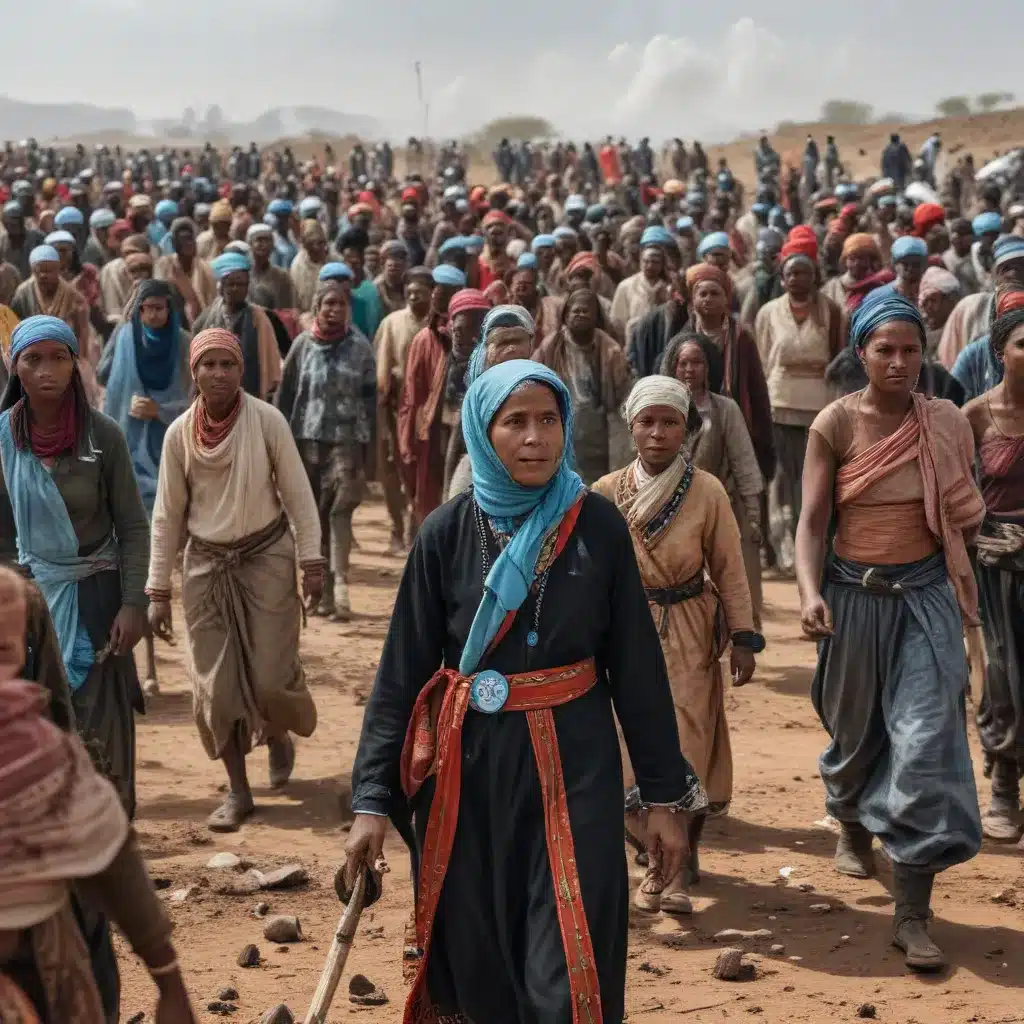
Uncovering the Interconnectedness of Global Challenges
As world leaders and international civil society gather in New York on September 22-23, 2024 for the UN Summit of the Future, a critical issue must be addressed: the climate-gender-conflict nexus. This interconnected challenge has far-reaching implications that could transform the global landscape if taken seriously at the Summit.
The (draft) Pact for the Future, the action-oriented outcome document being negotiated for the Summit, currently treats gender justice, the climate crisis, and conflict as separate silos of challenges. This overlooks their profound interconnectedness, which must be recognized and centered for any meaningful progress.
Recognizing the Climate Crisis as a Risk Multiplier
The climate crisis is not a standalone threat but a risk multiplier that exacerbates gender inequalities and conflict dynamics. Conflicts and climate change do not affect everyone equally – the escalation of (climate-related) conflicts can reinforce pre-existing vulnerabilities and patterns of gender-based discrimination.
One example of this nexus is the issue of food insecurity. As women are often responsible for subsistence agriculture and water collection, they suffer disproportionately when climate change affects water availability and agricultural yields. This increased burden, coupled with gender-based violence and inequality, further reduces women’s and girls’ access to food.
Similarly, the climate crisis can intensify existing conflicts by increasing poverty, inequality, and economic shocks. These impacts are very unevenly distributed, with marginalized groups facing the greatest challenges. Gender is a decisive factor in assessing an individual’s risk level for climate shocks and access to resources and adaptation options.
Addressing the Climate-Gender-Conflict Nexus
Despite these clear linkages, the current Pact for the Future does not adequately address the climate-gender-conflict nexus. While the document acknowledges that climate impacts can multiply the risks that fuel conflict, it fails to explore the gendered dimensions of this relationship.
The Pact recognizes the importance of diversity and gender representation in international institutions, but it does not connect this to the disproportionate impacts of the climate crisis and conflict. Likewise, the section on international peace and security focuses on addressing the root causes of violence and insecurity, but it neglects to incorporate the climate crisis and gender inequality as underlying drivers.
This represents a missed opportunity. The UN Summit of the Future should seize the chance to place the climate-gender-conflict nexus at the center of the discussions and the Pact for the Future. By recognizing the interconnected nature of these challenges, the Summit can pave the way for transformative solutions that address the complex realities faced by the most vulnerable groups.
Centering the Experiences of the Most Vulnerable
To truly tackle the climate-gender-conflict nexus, the Summit must center the experiences and perspectives of those most affected. This includes women, girls, and marginalized groups living in fragile and conflict-affected contexts who are disproportionately vulnerable to the impacts of climate change.
The Pact for the Future emphasizes the importance of the Women, Peace and Security (WPS) agenda, but it fails to acknowledge the ways in which the climate crisis undermines the implementation of UN Security Council Resolution 1325. Effectively addressing the nexus would require integrating a climate lens into the WPS framework.
Similarly, the Pact’s recognition of the disproportionate impacts of the climate crisis on vulnerable groups is a positive step, but it does not go far enough. The specific gendered dimensions of climate vulnerability must be explicitly highlighted and addressed.
Towards Transformative Solutions
The UN Summit of the Future presents a unique opportunity to reframe the global approach to the interconnected challenges of climate, gender, and conflict. By placing the climate-gender-conflict nexus at the center of the discussions and the Pact for the Future, the Summit can catalyze transformative solutions that reflect the realities faced by the most vulnerable.
This could involve:
- Integrating a gender perspective into climate action and conflict prevention efforts, ensuring that policies and programs are responsive to the needs and experiences of women and marginalized groups.
- Increasing the representation and leadership of women and marginalized groups in decision-making processes related to climate, peace, and security.
- Investing in gender-responsive climate and conflict resilience programming that addresses the underlying drivers of vulnerability.
- Strengthening the implementation of the WPS agenda by explicitly incorporating the climate crisis as a fundamental obstacle to its goals.
- Fostering collaborative, multistakeholder approaches that bridge the silos of climate, gender, and conflict to develop holistic, context-specific solutions.
By embracing the climate-gender-conflict nexus, the UN Summit of the Future can chart a path towards a more equitable, sustainable, and peaceful future. This is not merely an academic exercise, but a critical imperative for addressing the complex global challenges of our time.
Conclusion: A Defining Moment for Global Transformation
The UN Summit of the Future is a defining moment with the power to shape a better present and future. By taking the climate-gender-conflict nexus seriously and placing it at the center of the discussions and the Pact for the Future, the Summit can unlock transformative solutions that address the interconnected challenges faced by the most vulnerable communities worldwide.
Failure to recognize and respond to the climate-gender-conflict nexus would be a grave oversight, undermining the Summit’s ambitious goal of preparing the world to respond to emerging global challenges. Instead, the Summit should seize this opportunity to catalyze a new era of global cooperation, one that prioritizes gender justice, climate action, and sustainable peace as intrinsically linked pillars of a more equitable and resilient future.
As the Joint Action for Water community, we believe that the climate-gender-conflict nexus must be at the forefront of the UN Summit of the Future. By elevating this critical issue and advocating for transformative solutions, we can contribute to a more just, sustainable, and peaceful world for all.

